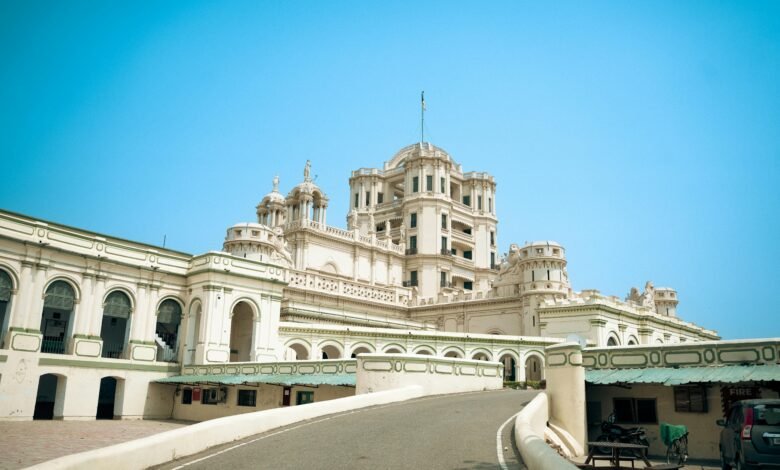India Earthquake Predictions: Science, Myths, and the Road to Preparedness

India, nestled in one of the world’s most seismically active regions, faces constant threats from earthquakes. From the Himalayan belt to the Deccan Plateau, the subcontinent’s tectonic complexity has fueled both scientific research and speculative myths about predicting the “next big quake.” While advancements in seismology have improved hazard assessments, the elusive goal of precise earthquake prediction remains a challenge. This article explores India’s seismic vulnerabilities, the science behind earthquake forecasting, prevalent myths, and strategies for building resilience.
India’s Seismic Landscape: Why Earthquakes Are Inevitable
India’s geology places it at the collision zone of the Indian and Eurasian tectonic plates, making regions like Jammu & Kashmir, Uttarakhand, the Northeast, and Gujarat prone to devastating quakes. The Bureau of Indian Standards (BIS) classifies the country into four seismic zones (II to V), with Zone V representing the highest risk. Historical events, such as the 2001 Bhuj earthquake (magnitude 7.7) and the 2005 Kashmir earthquake (magnitude 7.6), underscore the destructive potential of these geological processes. Despite this, rapid urbanization in high-risk zones, lax building codes, and population density amplify the human and economic toll of seismic events.
The Science of Earthquake Prediction: What’s Possible Today
Earthquake prediction—the ability to forecast the exact time, location, and magnitude of a quake—remains beyond the reach of modern science. However, seismologists use probabilistic seismic hazard assessment (PSHA) to estimate the likelihood of earthquakes in specific regions over decades. Technologies like GPS monitoring, satellite-based InSAR (Interferometric Synthetic Aperture Radar), and dense networks of seismometers track crustal movements and stress accumulation along fault lines. For instance, the National Centre for Seismology (NCS) in India monitors real-time seismic activity and issues alerts for aftershocks. While these tools improve preparedness, they cannot predict earthquakes with precision, leading to a focus on risk reduction rather than prediction.
Myths and Misinformation: The Dangers of Pseudoscientific Claims
In the absence of reliable predictions, myths about earthquake forecasting often gain traction. Claims about animals behaving erratically, planetary alignments, or pseudoscientific “radar” systems like VAN (claiming to detect seismic electric signals) lack empirical validation. In India, social media occasionally circulates viral warnings about impending quakes, causing unnecessary panic. For example, in 2023, a hoax about a major Himalayan earthquake led to widespread anxiety in Uttarakhand. Such misinformation diverts attention from evidence-based preparedness measures and highlights the need for public education on seismic risks.
Challenges in Earthquake Forecasting: Why Accuracy Eludes Us
The fundamental challenge in earthquake prediction lies in the chaotic nature of tectonic processes. Unlike weather systems, which follow observable atmospheric patterns, seismic activity occurs deep underground, driven by forces that are difficult to measure directly. Even minor changes in stress along a fault can trigger a quake, and precursors (like foreshocks or gas emissions) are inconsistent. Additionally, India’s limited historical seismic data—especially from pre-instrumental eras—hampers long-term modeling. While initiatives like the Indian Earthquake Risk Evaluation Centre aim to fill these gaps, the unpredictability of earthquakes remains a scientific frontier.
Preparedness Over Prediction: Building a Resilient India
Given the limitations of prediction, experts advocate prioritizing earthquake preparedness. This includes enforcing stringent building codes (e.g., IS 1893 for seismic-resistant structures), retrofitting older buildings, and developing early warning systems. Cities like Delhi and Mumbai, which lie in moderate-to-high risk zones, have begun implementing drills and public awareness campaigns. The Indian government’s National Disaster Management Authority (NDMA) promotes community-based disaster response plans, while technologies like the IIT Hyderabad-developed Earthquake Early Warning (EEW) system aim to provide seconds to minutes of alert before shaking begins. Such measures save lives, as seen in Japan and Mexico, where early warnings have reduced casualties.
Case Studies: Lessons from Past Earthquakes in India
Analyzing past earthquakes offers critical lessons for future preparedness. The 2001 Bhuj earthquake exposed the consequences of poor construction practices, leading to updated building codes in Gujarat. Conversely, Sikkim’s 2011 earthquake (magnitude 6.9) demonstrated the importance of landslide mitigation in hilly regions. The 2015 Nepal earthquake, which also impacted northern India, highlighted the need for cross-border collaboration in disaster response. These events underscore the importance of region-specific strategies, such as flood-resistant infrastructure in coastal areas and hill-state regulations for slope stability.
The Future of Earthquake Science: Innovations and Hope
Emerging technologies promise to revolutionize earthquake risk management. Machine learning algorithms analyze vast datasets to identify subtle patterns in seismic activity, while crowdsourced apps like MyShake (developed by UC Berkeley) allow citizens to report tremors in real time. India’s participation in global initiatives, such as the Global Earthquake Model (GEM), fosters knowledge sharing and capacity building. Meanwhile, projects like the Deep Underground Scientific Laboratory in Karnataka aim to study tectonic processes at unprecedented depths. While true prediction may remain elusive, these innovations enhance our ability to mitigate risks and respond effectively.
Conclusion:
Earthquake prediction in India remains a complex interplay of science, uncertainty, and societal readiness. Rather than chasing unproven forecasts, the focus must shift to strengthening infrastructure, raising public awareness, and investing in adaptive technologies. By learning from past disasters and embracing evidence-based strategies, India can transform its seismic vulnerabilities into opportunities for resilience. In a nation where millions live in the shadow of tectonic time bombs, preparedness—not prediction—is the ultimate safeguard against catastrophe.
